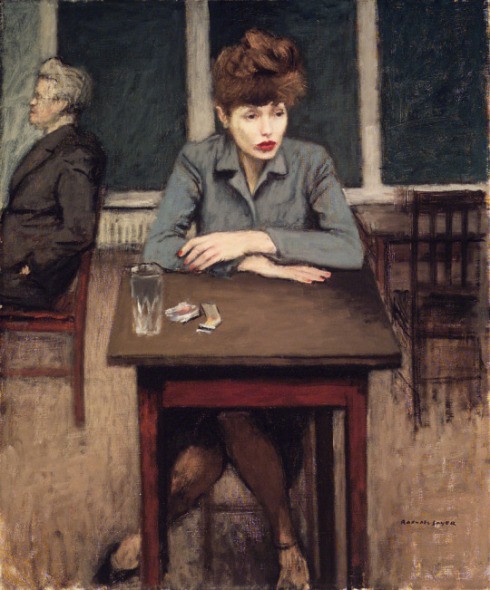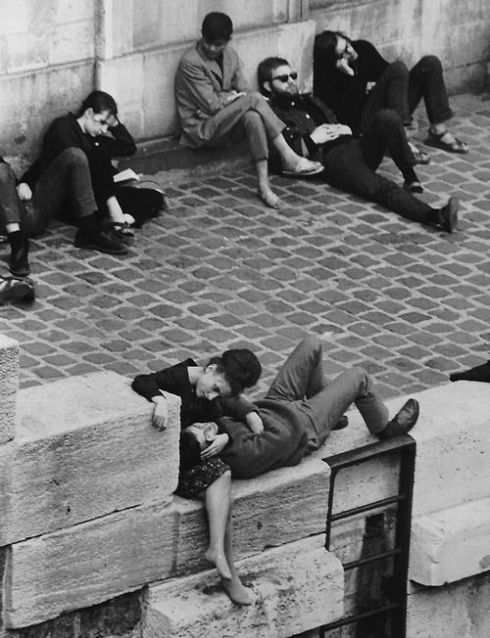‘To whom shall I hire myself out? What beast should I adore? What holy image is attacked? What hearts shall I break? What lies shall I uphold? In what blood tread?‘ (Arthur Rimbaud, A Season in Hell – The Drunken Boat)
If you’d take a moment to think about the 1950s culture (in USA), I bet that the first things that would pop up in your mind would be film-stars such as Marylin Monroe and James Dean, drive-in cinemas, television, milkshakes, baby boom, suburban homes… Today, the 1950s seem like an idyllic decade, especially if we observe the cultural products of the time. Well not really. It was quite a restrictive and claustrophobic society to live in. Below the surface, this perfect society was hiding the beginning of the cold war, nuclear threats, McCarthysm, racial segregation etc. American reality of the 1950s was a picture of duality and hypocrisy. Medias portrayed it as they wished it to be, but something deviant and magical lay hidden beneath the surface. Every society has outsiders, the misfits, individuals that don’t belong. As an alternative to the perfect ’50s world, a different reality emerged, mostly related to artists, musicians, writers, actors and bohemians from the East and West coast of the States. This group was later named Beat generation, after a quote by Jack Kerouac.
 Lavender Mist Number 1 – Jackson Pollock, 1950
Lavender Mist Number 1 – Jackson Pollock, 1950
World of Beat generation was a forerunner of the hippie counterculture that characterised the 1960s. World of Beatniks is a world of real characters immersed in Jazz, Be-Bop, marijuana, opium, amphetamine, Native American tradition of enjoying hallucinogenic substances, Mexico, prostitution, race mixing, reveries about Europe; it’s a world whose members have a strong desire to live, and are thus in conflict with the Western world which is striving for possession of material goods. Besides the well known beat generation authors such as Jack Kerouac, William Burroughs and Allen Ginsberg, there were other artists unrelated to Beat generation who lived and created in the same spirit and embraced same ideas.
 Jackson Pollock, No. 6, Jackson Pollock, 1948
Jackson Pollock, No. 6, Jackson Pollock, 1948
One of those young people was Jackson Pollock, an important figure in abstract expressionism or ‘action painting’. He believed in the necessity of spontaneous impulse.The way Pollock painted is specific; he would put large canvases on the floor, meditate over them, and finally he would drip fluid paint on the canvas. As the canvases were large, he would walk right into them, becoming a part of the painting, rather than the creator of it. He said himself: Every good painter paints what he is.
Just like Chinese calligraphy, these paintings needed to be painted fast. They mustn’t be pre-devised, on the contrary, they must resemble a spontaneous outburst. Behind this requirement of artists and critics lies the influence not only of Chinese art, but the influence of all Far East mysticism, especially of Zen Buddhism. Part of the doctrine of Zen Buddhism is that one can’t be enlightened unless one is radically kicked out of routine of rational way of thinking. Opening quote by Arthur Rimbaud was written on the wall of studio of Lee Krasner, Pollock’s wife and a fellow painter. Poets like Rimbaud never go out of fashion because what they wrote can be translated in any era. Unfortunately, Lee neglected her career in order to help Pollock in his.
Whilst writing this post, Kerouac’s long poem ‘Mexico City Blues’ lingers in my mind. I am about to read it, and I thought it would be interesting to get in the mood of Beatniks for the occasion. Here are some pictures that remind me of beatniks and Kerouac’s novels:
 Café Scene, by Raphael Soyer, 1946
Café Scene, by Raphael Soyer, 1946
 Joyce Holden ‘Girls in the Night’, Universal, 1953
Joyce Holden ‘Girls in the Night’, Universal, 1953
 Too much liquor in Kansas, 1946
Too much liquor in Kansas, 1946
 Parisian Beatniks Hanging Out on Bank of the Seine, 1950s
Parisian Beatniks Hanging Out on Bank of the Seine, 1950s
 Jackson Pollock and Lee Krasner, 1950s
Jackson Pollock and Lee Krasner, 1950s
 Painter Helen Frankenthaler sitting amidst her art in her studio. Location New York, 1956
Painter Helen Frankenthaler sitting amidst her art in her studio. Location New York, 1956
For the end I’d like to share a quote by Helen Frankenthaler, a fellow abstract-expressionism painter who died a few years ago: There are no rules. That is how art is born, how breakthroughs happen. Go against the rules or ignore the rules. That is what invention is about.






I especially loved this page,, but having trouble writing on my laptop,, xxxx
LikeLike